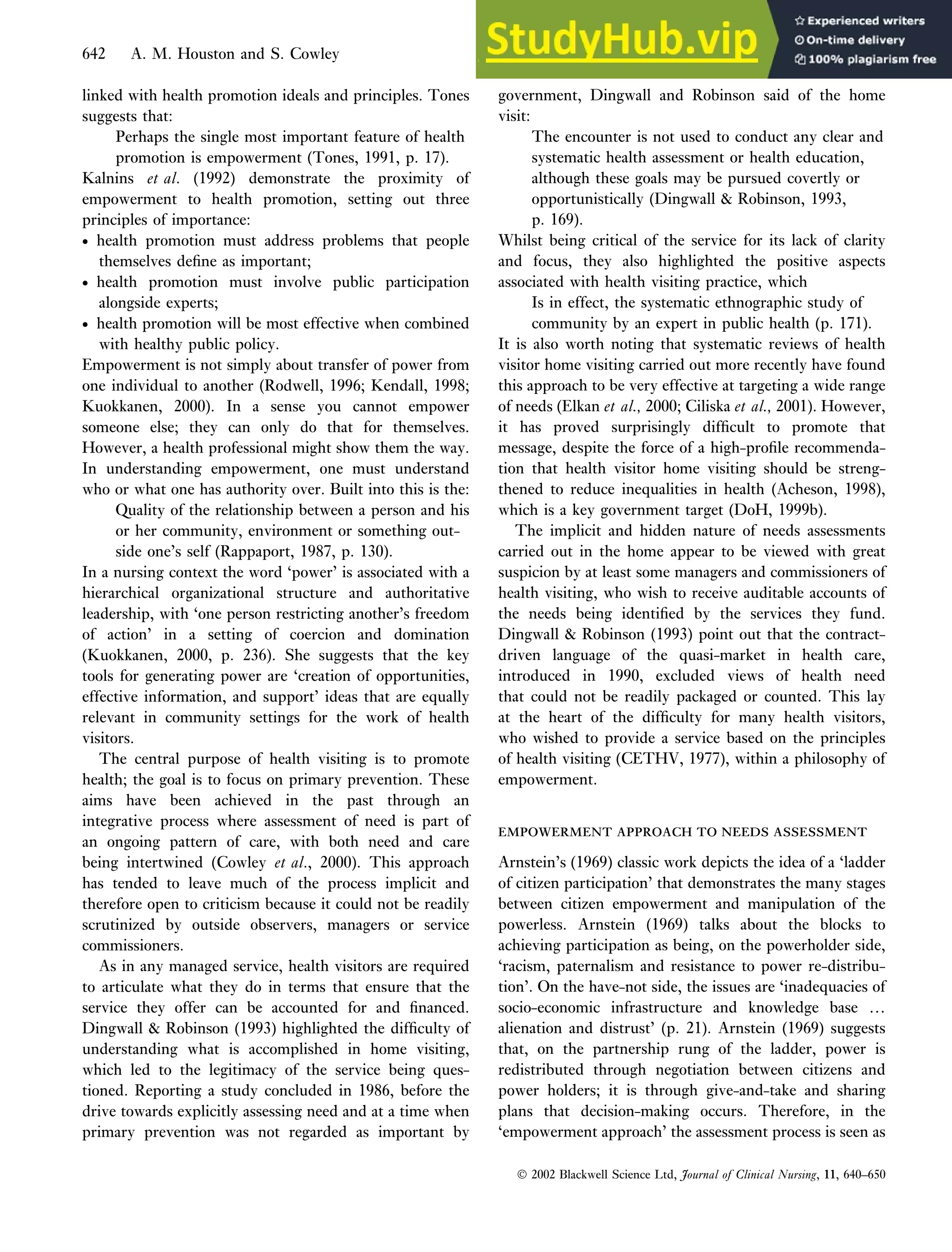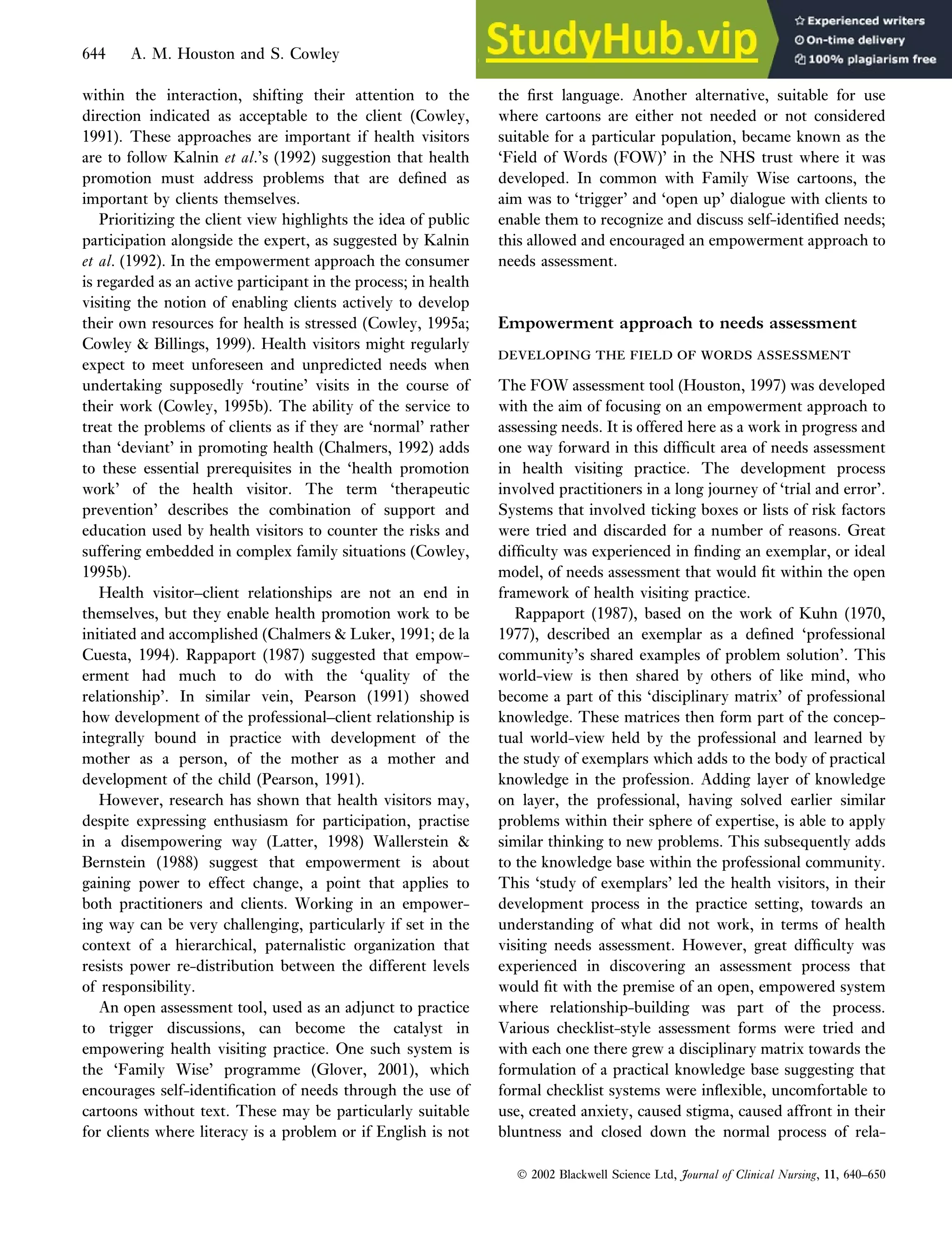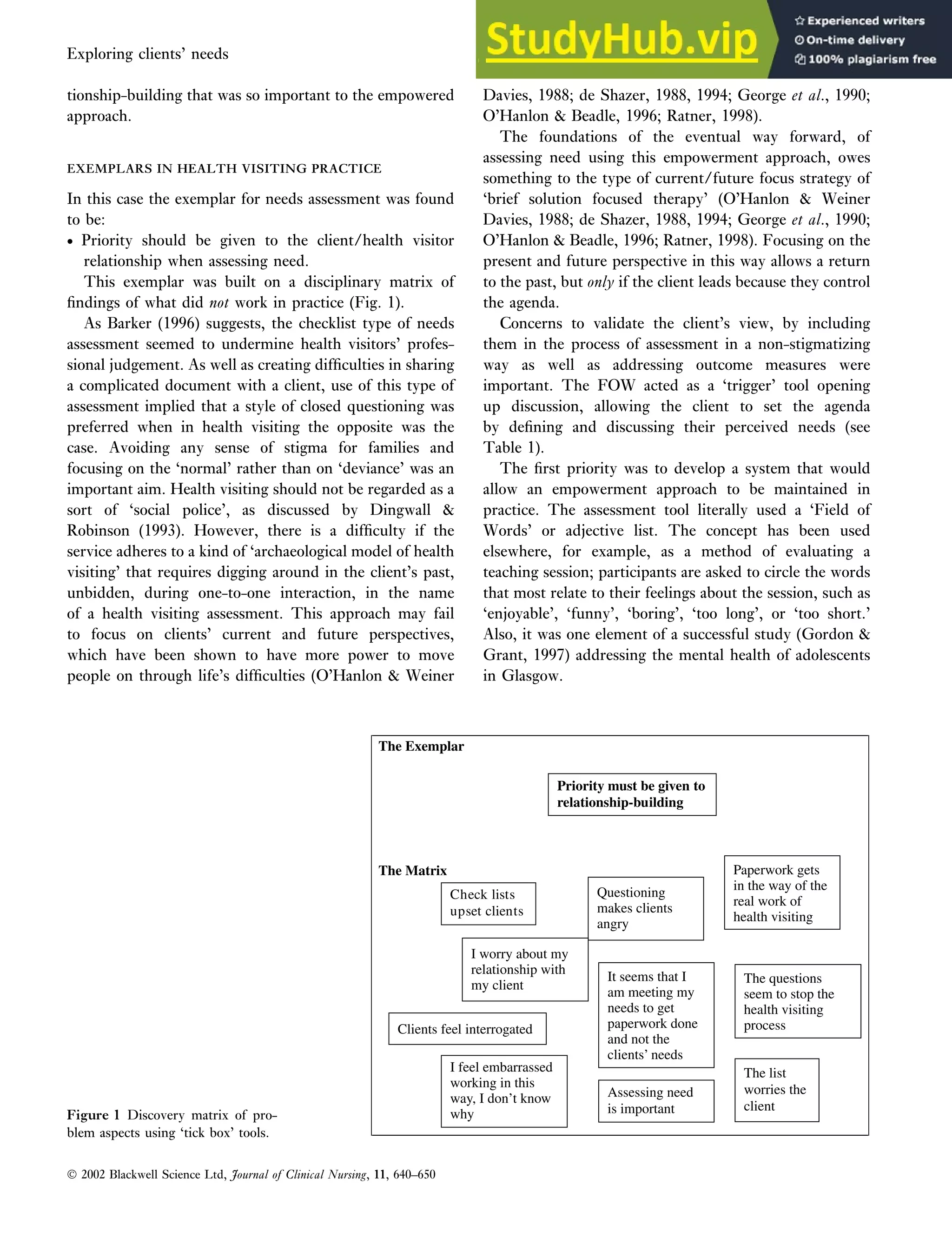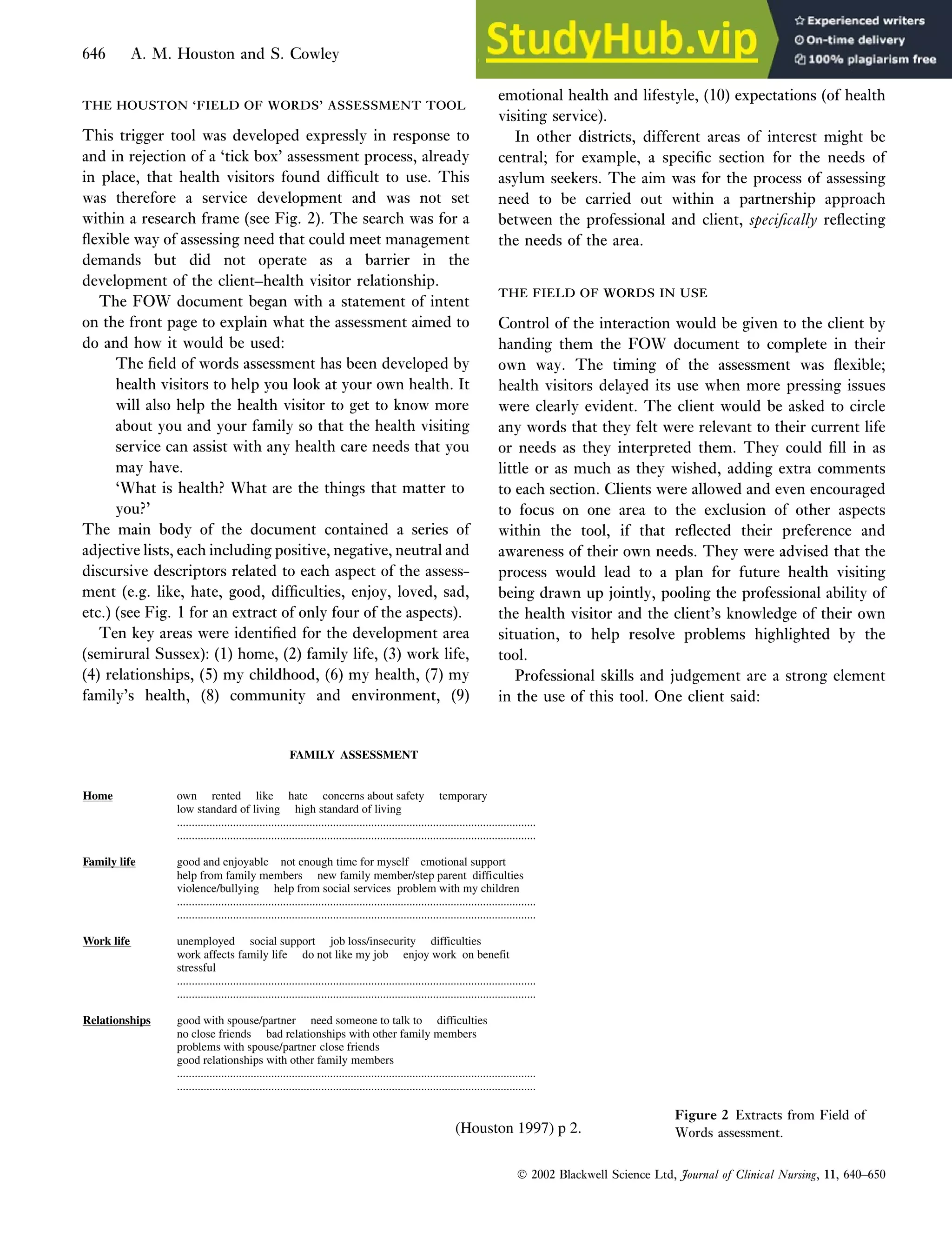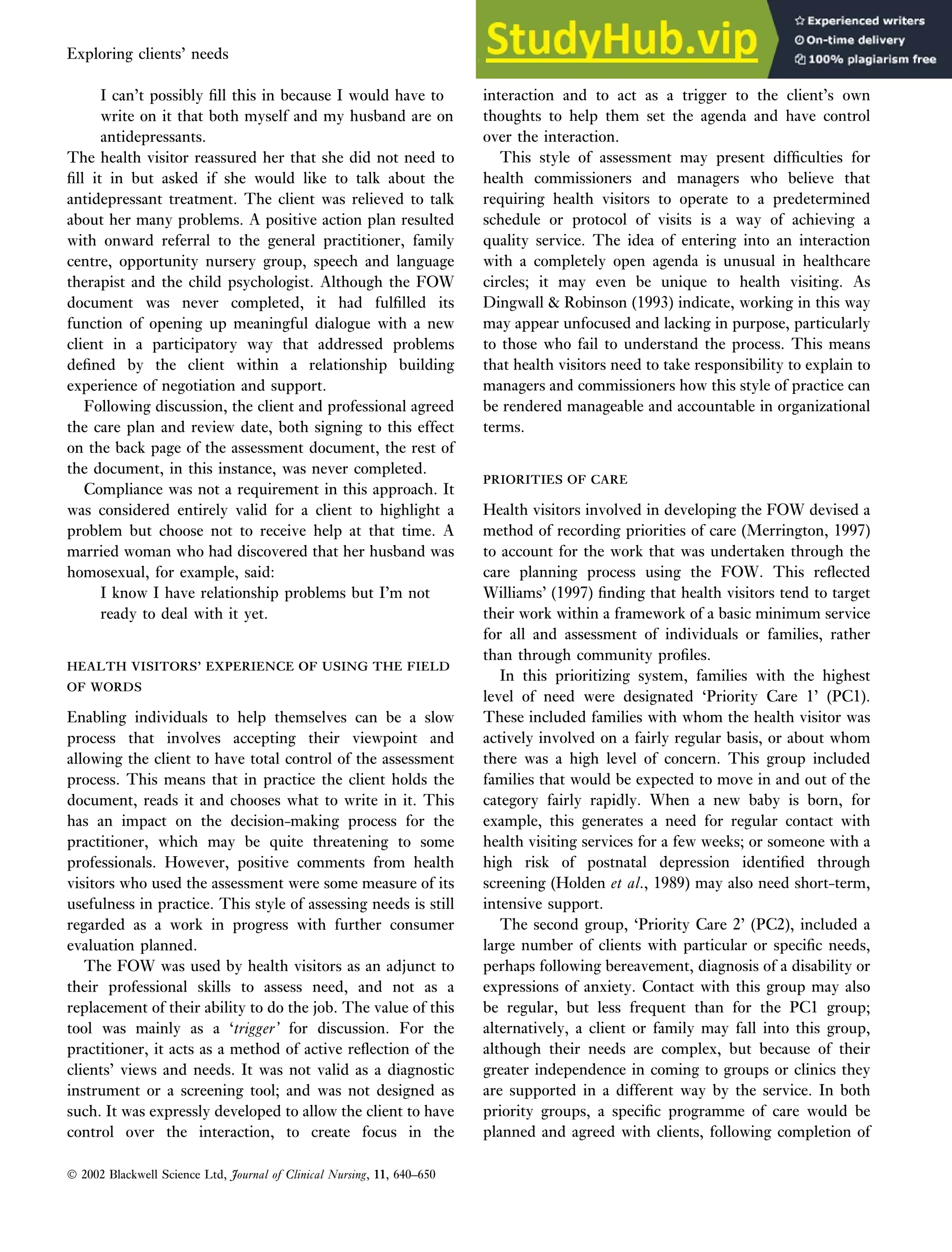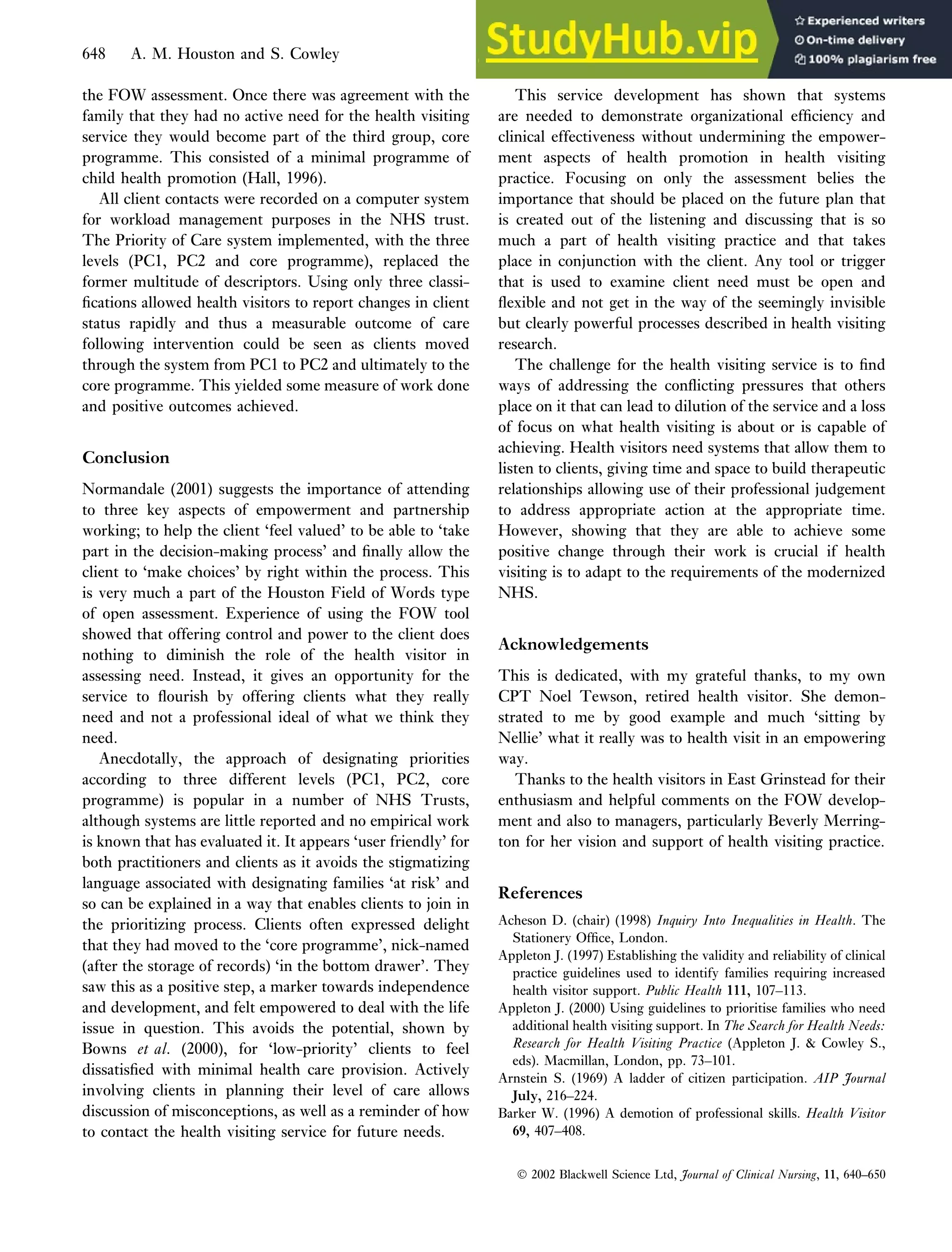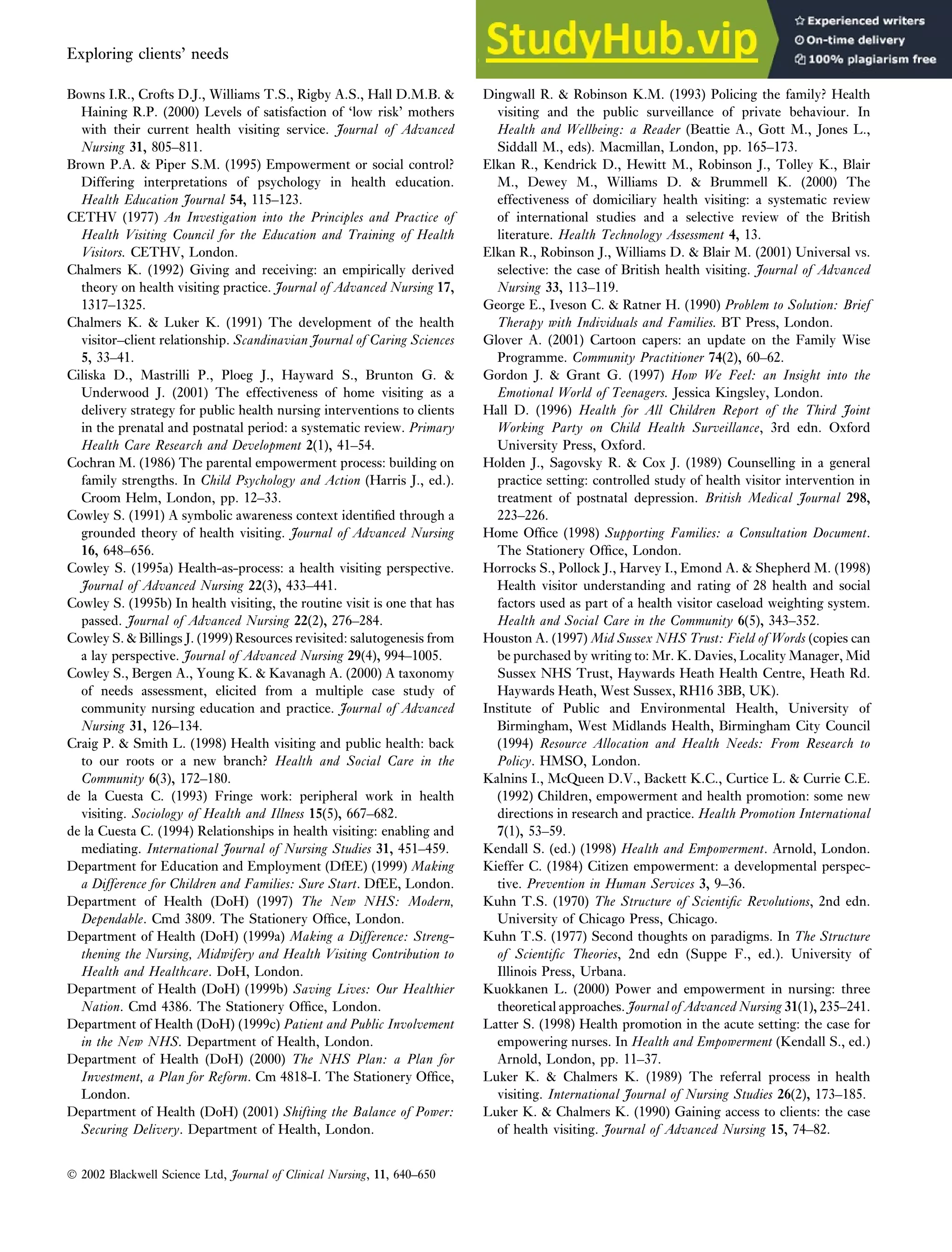This document discusses an empowerment approach to needs assessment in health visiting practice. It proposes that needs assessment should be a collaborative process that empowers clients rather than just revealing information to fulfill organizational requirements. The paper advocates for an approach where the client leads the interaction, the health visitor acts as a facilitator, and assessment is integrated into the overall helping relationship. Research supports methods that use open-ended dialogue, flexibility, and responsiveness to client cues rather than predetermined checklists. This empowers clients by promoting participation, control, and developing their competence to improve their own health.
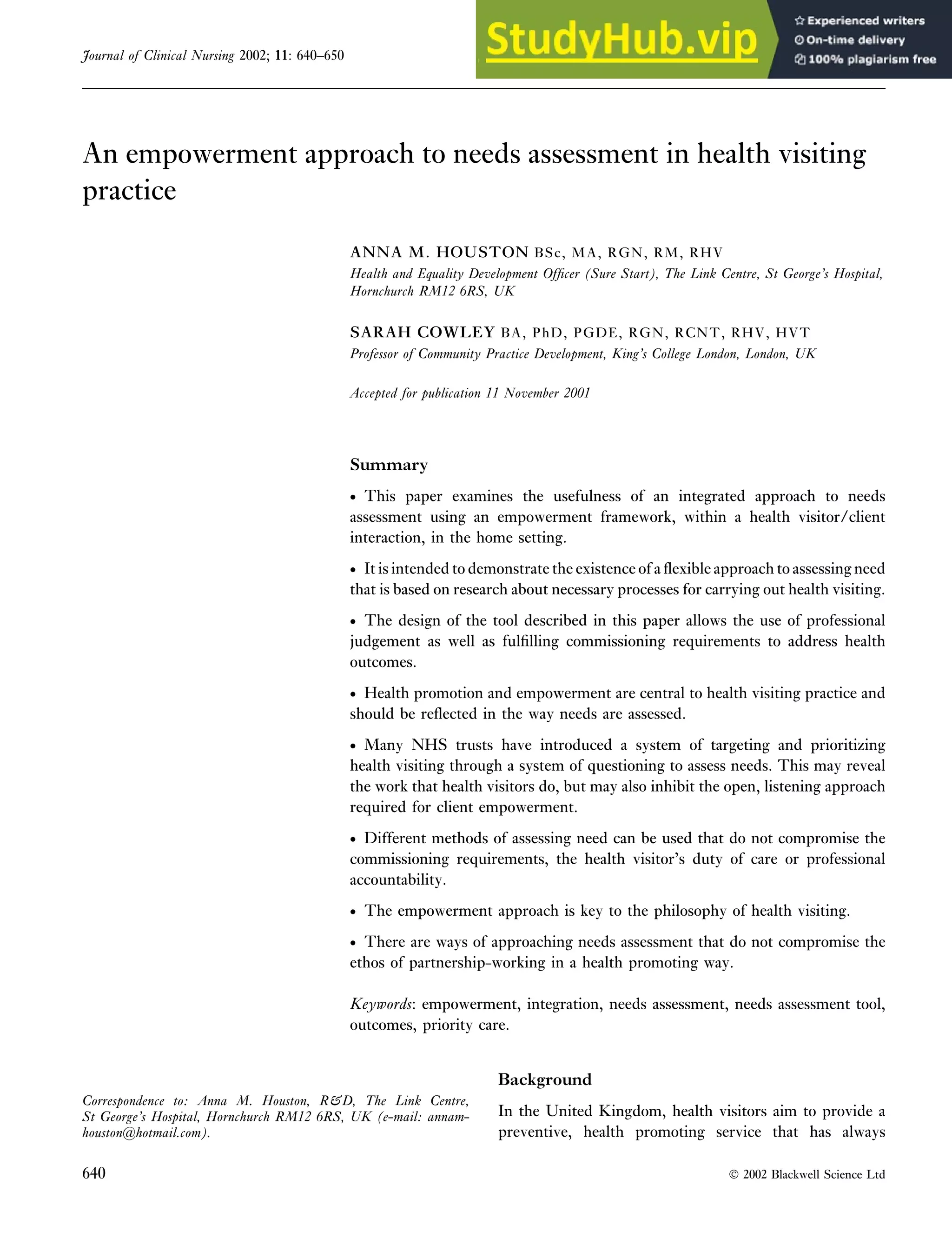
![tended to be heavily influenced by government policy. In
consequence, it seems that health visiting practice has lost
much of its autonomy in the last 15 years, having been
substantially medicalized in its orientation and deflected
from its primary preventive function (Robinson, 2000).
The advent of a new Labour government in 1997 and
rejection of previous New Right policies brought, for the
first time in 18 years, the prospect of change in the health
visiting service. It was suggested that health visitors, in
common with their nursing and midwifery colleagues,
were to be seen as:
Public health workers, focusing on whole communi-
ties as well as individuals, fulfilling the public health
functions of community profiling, health needs
assessment, communicable disease control and com-
munity development (DoH, 1999a, p. 60)
Many health visitors felt that recognition of the import-
ance of promoting health, alongside the proactive element
of the health visiting service, in working with children,
families and communities, was a long awaited change in
government attitude. At the same time, the public health
terminology created confusion regarding the remit of
health visitors. In practice, the policy agenda provoked a
sense of excitement mixed with anxiety. How could health
visitors implement the many new ideas emanating from
government? Craig Smith (1998) reminded us that
community development tends to be used for all or part of
the work of health visiting. In that case, were these really
new ideas, or a return to a lost path?
Also, whilst promoting a modern approach to delivering
health care (Department of Health [DoH], 1997, 1999a,
2000, Home Office, 1998), echoes of the past administra-
tion lingered. Provision of services based on systematic
assessment of need, a starting point for resource allocation
(Institute of Public and Environmental Health, 1994),
continues to be considered good practice. The strategy for
nursing, midwifery and health visiting, for example,
proposes that:
Understanding and responding to local health
needs and working with local communities will
become an increasingly significant aspect of profes-
sional practice (DoH, 1999a, p. 16)
The idea of obtaining accurate and appropriate informa-
tion before deciding on a care plan is seen as a
commendable part of the process of care delivery for
individuals. Defining objectives and identifying the means
by which those same objectives might be met is also part of
the care plan following assessment (Robinson Elkan,
1996). However, the above quote draws attention to the
dual expectation of health visitors, that they can deliver
information about local health needs for organizational
purposes, whilst maintaining the ethos of health visiting in
their practice with individuals, which remains a challenge.
Much has been written about how health visitors can
assess needs across their local populations, particularly for
purposes of assessing workload, or weighting caseloads
(Shepherd, 1992
1 ; Rowe et al., 1995; Horrocks et al.,
1998). Many NHS trusts have developed guidance of
some kind through which health visitors are supposed
either to assess needs or prioritize the families they visit,
largely for organizational purposes (Appleton, 1997, 2000).
Far less attention has been paid to the need to ensure that
health visiting practice maintains its primary function of
promoting health, whilst carrying out these additional
functions. That is the focus of this paper.
In the first half of the paper, the concept of empow-
erment will be unravelled in relation to health promotion
and needs assessment, and a range of qualitative research
will be used to locate the features of empowerment in
established models of health visiting. The second half of
the paper is devoted to describing how these features were
applied, by using a ‘field of words’ explicitly developed in
practice for the purpose of assessing needs through an
empowerment approach. This model was applied along-
side a prioritizing approach that enabled health visitors to
meet some of the organizational needs, without sacrificing
the central ethos of health visiting.
Empowerment
EMPOWERMENT AND HEALTH PROMOTION
EMPOWERMENT AND HEALTH PROMOTION
Empowerment has its roots in the radical socialist thought
of 30 years ago: 1970s feminism, self-help and collective
consciousness-raising. Empowerment is a political concept
as well as being based in individual and group work
(Kendall, 1998). The World Health Organization (WHO,
1986) has long accepted that ‘actively empowered com-
munities’ are necessary to generate health. Empowerment
is a process, defined as:
…a mechanism by which people, organizations
and communities gain mastery over their affairs
(Rappaport, 1987, p. 122).
Many practitioners express their dislike of the term
‘empowerment’, suggesting that it is a ‘vogue’ expression
that has become so tired and overused that it no longer has
meaning in health terms. Such doubts have been echoed in
critiques that suggest that the term can be interpreted in
so many ways that it is not clear what purpose it serves
(Brown Piper, 1995). However, whilst it has been
likened to a ‘holy grail’ in health promotion (Rissell, 1994),
empowerment is a concept that has become inextricably
Exploring clients’ needs An empowerment approach to needs assessment 641
2002 Blackwell Science Ltd, Journal of Clinical Nursing, 11, 640–650](https://image.slidesharecdn.com/anempowermentapproachtoneedsassessmentinhealthvisitingpractice-230805214727-dc115b04/75/An-Empowerment-Approach-To-Needs-Assessment-In-Health-Visiting-Practice-2-2048.jpg)
